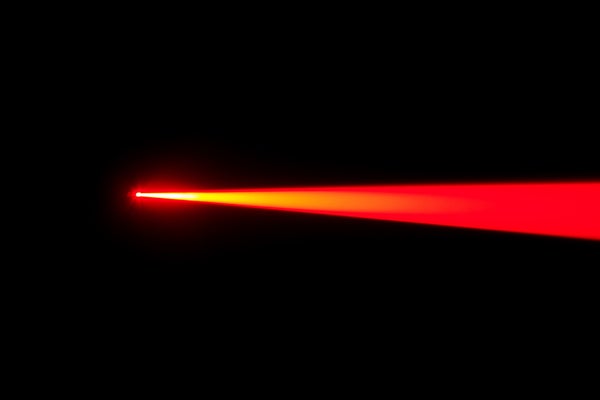Researchers have exploited the twisty nature of topological physics to produce a high-quality beam of laser light—a step that could lead to the first practical application of this burgeoning field. A team of physicists describes its device, and the theory behind the technology, in two studies published on February 1 in Science.
The demonstration “brings topological photonics substantially closer to real applications”, says Marin Soljačić, a physicist at the Massachusetts Institute of Technology in Cambridge.
Topology is a branch of mathematics that studies shapes and their possible arrangements in space—from simple knotted loops to the higher-dimensional universes of string theory. Since the 1980s, physicists have discovered a number of states of matter that derive odd properties from topological phenomena, such as the way that magnetization—pictured as a field of arrows—winds around a material. (Some of the founders of the field received the 2016 Nobel Prize in Physics.)
On supporting science journalism
If you're enjoying this article, consider supporting our award-winning journalism by subscribing. By purchasing a subscription you are helping to ensure the future of impactful stories about the discoveries and ideas shaping our world today.
In particular, theorists have predicted—and experimentalists have confirmed—that certain insulating solids can, counterintuitively, conduct electricity thanks to topological properties. The currents arise from flows of electrons on the materials’ surfaces, and they have a unique advantage: the wavy patterns—like knotted loops—can be difficult to disrupt. This feature, known as topological protection, enables electrons to flow unimpeded. It prevents electron flows from changing direction or bouncing back off imperfections, which decrease efficiency.
Physicists have also observed topological protection in electromagnetic waves. In a solid, topological effects emerge when electrons manoeuvre their way around the arrangement of atoms. Similarly, photons of light can be made to negotiate a material that has a regular pattern of gaps. “There are many types of topological phenomena that can happen in almost any wave system in nature, when you make it periodic,” says Soljačić, whose team found some of the first experimental evidence of topological photonics about a decade ago.
A new way to channel light
In the latest studies, Mordechai Segev of the Technion Institute in Haifa, Israel, and his collaborators used topological photonics to create a laser beam, in which the light waves are in phase.
The team etched an array of circular channels into the surface of a chip of semiconductor material, and cast infrared light onto the structure from above. The circles—each a few microns in diameter—caught light waves only of precise wavelengths, which then moved from one loop to the next.
In photonic systems, the direction of wave propagation is usually reversible. An effort last year to make a topological laser, led by Boubacar Kanté at the University of California, San Diego, used magnetic fields to constrain propogation.
But in Segev's system, some loops were asymmetrically shaped, which made the light flow preferentially in one direction. As the system received increasing energy from the infrared source, the circulating light pulse was reinforced, or amplified. Eventually, the light waves bounced out of an exit channel—pulsating in step as a focused laser beam.
The experiments, carried out with collaborators at the University of Central Florida in Orlando, showed that the lasers were more energetically efficient and produced higher-quality beams—meaning they came closer to being a perfect, sinusoidal wave—than similar lasers that don't use topology. Thanks to topological protection, “the system has inherited robustness against imperfections”, says Segev.
The devices by both Segev’s and Kanté’s teams are “very important and exciting developments”, says Mohammad Hefezi, a photonics researcher at the University of Maryland in College Park. But he says that more tests will be needed to confirm whether Segev’s laser performs better than existing devices.
Most physicists had been sceptical that topological photonics could be compatible with laser-light generation, Segev says. Although topological ideas first arose in the theory of solid-state matter and are seen by many researchers as promising for electronics, few practical applications exist. It’s no coincidence that the first topological devices to market could be in photonics. These systems are often easier to work with than solid-state ones, Soljačić says. Researchers can create periodically patterned structures with almost any properties they want to pass light through, whereas the atoms in materials cannot be arranged in arbitrary ways.
This article is reproduced with permission and was first published on February 1, 2018.
